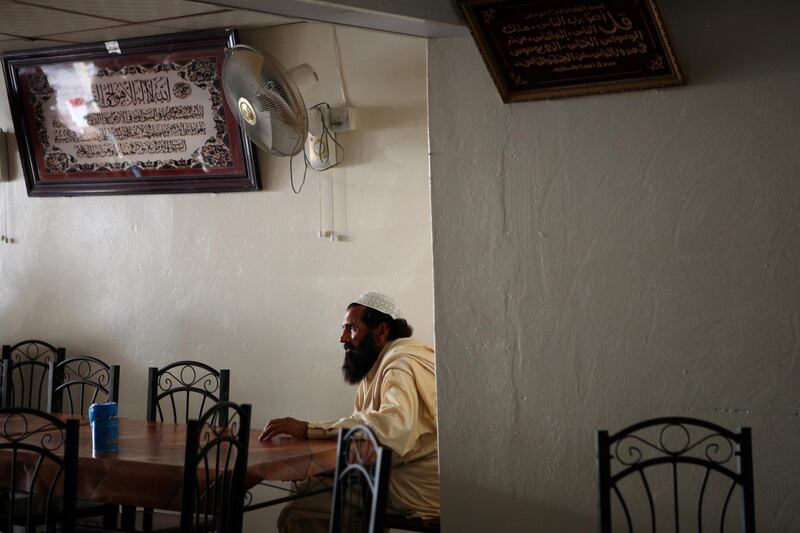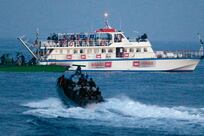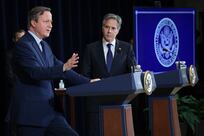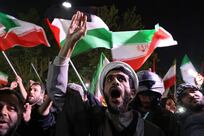In recent weeks, The National has been steeped in nostalgia. The relaunch of Abu Dhabi’s Capital Radio, providing an opportunity to look back at when it was first launched, more than 35 years ago. A wander down memory lane in Al Zahiyah, still known by many as the Tourist Club area. The hydroponic cultivation of vegetables in plastic greenhouses on the then desert island of Saadiyat. A news item and then a comment piece on the newly established but popular Facebook group Abu Dhabi Good Old Days, whose membership has grown to more than 7,200 in a matter of a few weeks.
Reading the stories has, naturally, brought back some recollections of my own. Those Saadiyat greenhouses are one of the few parts of Abu Dhabi history to have been featured in the British magazine Country Life, better known for its showcase of grand country houses. Meanwhile, the mention of the old Tourist Club brings to mind a vivid memory of a National Day decades ago, when the dignitaries on The Club's balcony watching the boat races included not only the late Sheikh Zayed, but also his older brother, and predecessor as ruler, Sheikh Shakhbut.
Back in the 1980s, the old Marina Club, between the Meridien Hotel and the Tourist Club, hosted an open-air concert by British pop star Cliff Richard, at which I embarrassed my then teenage daughter by singing along happily to some of his best-known songs. A few years earlier, in February 1979, Britain’s Queen Elizabeth II hosted a dinner on board the Royal Yacht Britannia, anchored in Mina Zayed, attended by Sheikh Zayed and a whole host of rulers, sheikhs and other dignitaries.
It's fine for those who, like me, have memories of the Abu Dhabi of yesteryear to wallow in a bit of nostalgia. It's easier too when recollections of some of the irritations of the past have faded, such as the frequent power cuts – not much fun if you lived on the top of a 12-storey building – or the huge pools of water that flooded low-lying areas between the buildings after winter rains. The Tourist Club area was known colloquially as the Lake District for good reason. Then there was the chaos that often occurred at the roundabouts, as people with different styles of driving negotiated the interweaving lines of traffic. Traffic lights are so much more efficient and the number of accidents certainly appear to be considerably reduced.
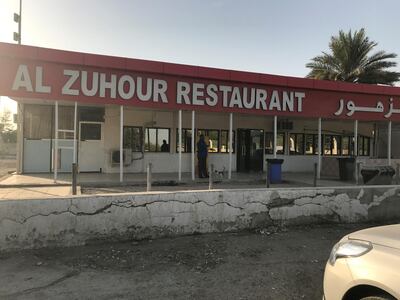
It's more difficult, though, to try to communicate to newcomers a real impression of what life was like, beyond superficial comments on how the buildings have got bigger, the roads wider and the shops better, with a much more effective programme of city management. However, Catastrophes, Crashes and Crimes in the UAE, a recently published book by Athol Yates, a professor at Khalifa University, which reproduces some of the more esoteric newspaper cuttings from the 1970s, does provide something of an introduction. So much has changed as the city has grown and modernised.
Yet if one looks carefully, some of the past survives and, a couple of weekends ago, I stepped back into it. Before the fancy Adnoc Oasis stations were built along the highways linking Abu Dhabi to Al Dhafra, Al Ain and Dubai, selling sandwiches, drinks, confectionery and fast food as well as petrol, there used to be rough-and-ready restaurants by the roadside. "Transport cafe" is the term used for them in Britain. Now, most have closed, their buildings derelict or demolished, access to their unpaved parking areas blocked by barriers.
Not far from Al Sameih, halfway between Abu Dhabi and Dubai, one still survives: the Al Zuhour restaurant, where cheap fare can still be found – curries, biriyanis, fried egg in rolls of local bread and hot, over-sweetened cups of tea. A "chai double-bag" was the particular favourite of a now-deceased friend who spent nearly 20 years in Abu Dhabi. The customers are mainly truck and van drivers taking a break; the tables and chairs are simple; the lingua franca is pidgin Hindi-cum-Arabic; and the unexpected arrival of a family provokes open, though gentle, curiosity. Tucked away in a corner is a family room, with a couple of tables that are spotlessly clean and show little sign of use.
A lorry driver can get a meal here for Dh10. A family of four can eat their fill for less than Dh50. The Al Zuhour probably wouldn’t be deemed worthy of an entry in any Good Food Guide to the Emirates, although a couple of decades ago my friend and I briefly considered writing a book on the UAE’s best transport cafes. But it struggles on, still a preferred stop for some of those who drive along the road. A visit offers, for the UAE’s old-timers, a step back into bygone times. For others, it is a glimpse of how things used to be. Those rushing past who wonder about those good old days might consider slowing down and pulling in for a traditional UAE pit-stop.
